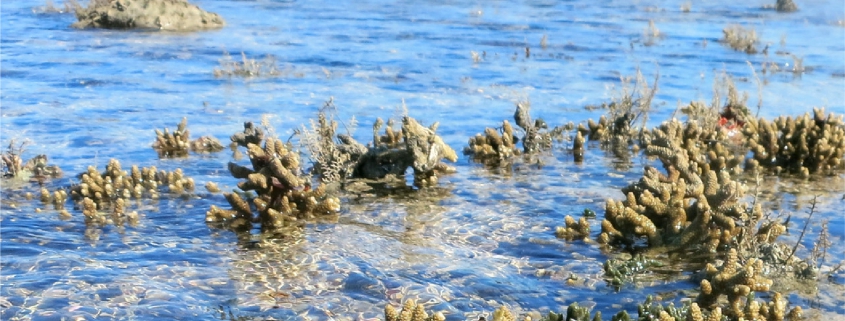Thermally tolerant Kimberley corals are not immune to bleaching
Scientists have conducted the first peer reviewed test to find out if Kimberley coral reefs are resistant to coral bleaching because of their natural ability to adapt to the high temperatures off the northwest coast of Australia, and found they are nonetheless highly susceptible to heat stress and bleaching.
Coral bleaching happens when sea temperatures rise, causing the breakdown of the symbiosis between coral and their zooxanthellae (the microscopic plants which gives coral most of its colour), which can be fatal for the coral.
The study was carried out in partnership with the Western Australian Marine Science Institution’s (WAMSI) Kimberley Marine Research Program and the ARC Centre of Excellence for Coral Reef Studies (Coral CoE) at The University of Western Australia’s Oceans Institute.
Lead author Dr Verena Schoepf said the researchers were surprised to find that corals around the Kimberley region in far north Western Australia are just as sensitive to heat stress and bleaching as their counterparts from less extreme environments elsewhere.
“We found that exceeding the maximum monthly summer temperatures by one degree Centigrade for only a few days is enough to induce coral bleaching,” Dr Schoepf said.
“We were surprised because under normal conditions, Kimberley corals can tolerate short-term temperature extremes and regular exposure to air without obvious signs of stress.”
The Kimberley region has the largest tropical tides in the world reaching up to 10 metres, creating naturally extreme and highly dynamic coastal habitats that corals from more typical reefs could not survive.
“Unfortunately the fact that Kimberley corals are not immune to bleaching suggests that corals living in naturally extreme temperature environments are just as threatened by climate change as corals elsewhere,” Dr Schoepf said.
“We found that both branching and massive corals exposed at low tide coped better with heat stress than corals from deeper water,” co-author Professor Malcolm McCulloch from the Coral CoE said. “However this doesn’t mean that they are immune to bleaching.”
The research also found that massive corals had a better chance of surviving and recovering from bleaching than branching corals.
The current strong El Niño weather pattern in the Pacific puts many coral reefs at risk of severe bleaching, and recent weather predictions show that the Kimberley region might be particularly affected in 2016.
“With the third global bleaching event underway, it has never been more urgent to understand the limits of coral thermal tolerance in corals,” Professor McCulloch said.
Co-authors on the study also included Dr Michael Stat from the Trace and Environmental DNA (TrEnD) Laboratory at Curtin University and Dr James Falter from the Coral CoE at The University of Western Australia.
Paper:
Schoepf, Verena, Michael Stat, James L. Falter, and Malcolm T. McCulloch. 2015. “Limits To The Thermal Tolerance Of Corals Adapted To A Highly Fluctuating, Naturally Extreme Temperature Environment”. Scientific Reports 5 (1). doi:10.1038/srep17639.
Contacts:
Dr Verena Schoepf – (+61 8) 6488 3644 verena.schoepf@uwa.edu.au
Professor Malcolm McCulloch – (+61 8) 6488 1921 malcolm.mcculloch@uwa.edu.au
Aleta Johnston – WAMSI Communications (+618) 6488 4574 / 0431 514 677

